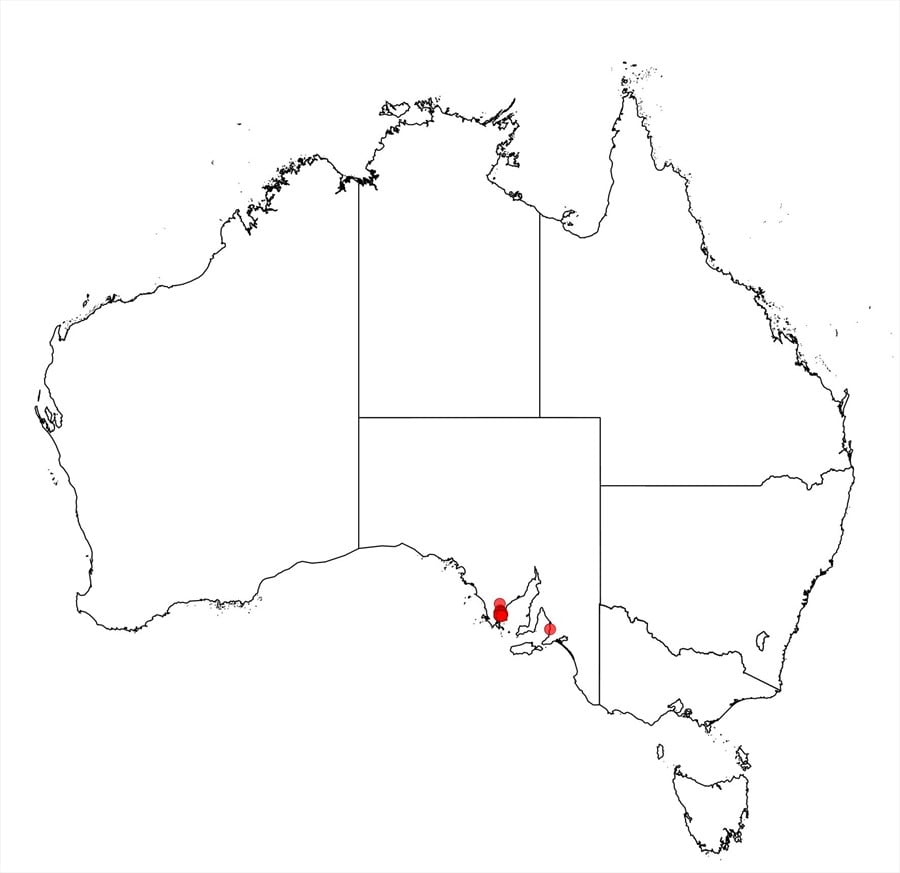Acacia whibleyana R.S.Cowan & Maslin
WATTLE
Acacias of Australia
Common Name
Whibley Wattle
Family
Fabaceae
Distribution
Restricted to near-coastal areas S of Tumby Bay on the Eyre Peninsula, S.A. It is currently known from around 300 plants growing on road verges in a very localised area.
Description
Spreading shrub 1–2.5 m high. Branchlets glabrous with prominent raised phyllode-scars. Phyllodes ascending, elliptic to oblanceolate, ±asymmetrical, straight, occasionally slightly curved, 0.9–3 cm long, 2.5–8 mm wide, 2–4.5 times longer than wide, with curved to rostriform (occasionally straight) apiculate tip, rigid, thick, glabrous, with numerous closely parallel, immersed nerves; gland 1, near base. Inflorescences simple, 2 per axil; peduncles 6–15 mm long, glabrous; heads globular, 2.5–5 mm diam., 18–19-flowered, golden. Flowers 5-merous; sepals and petals free. Pods narrowly oblong, slightly raised over but not constricted between seeds, scarcely undulate, straight to curved, sometimes circinnate, to 4.5 cm long, 5–7 mm wide, coriaceous, glabrous. Seeds oblique, broadly elliptic, 2.5–3 mm long, subglossy, dark brown-black; aril large, terminal.
Habitat
Grows on limestone and loam, sometimes near salt swamps.
Specimens
S.A.: S of Tumby Bay, B.Copley 4916 (AD).
Notes
A member of the 'A. ancistrophylla group', most closely related to the more widespread A. ancistrophylla, which typically has branchlets lacking raised phyllode-scars, shorter peduncles, narrower pods and seeds longitudinal in the pods. Also similar to A. amyctica.
FOA Reference
Data derived from Flora of Australia Volumes 11A (2001), 11B (2001) and 12 (1998), products of ABRS, ©Commonwealth of Australia
Author
Minor edits by J.Reid
R.S.Cowan
This identification key and fact sheets are available as a mobile application:
URL: https://apps.lucidcentral.org/wattle/
© Copyright 2018. All rights reserved.







